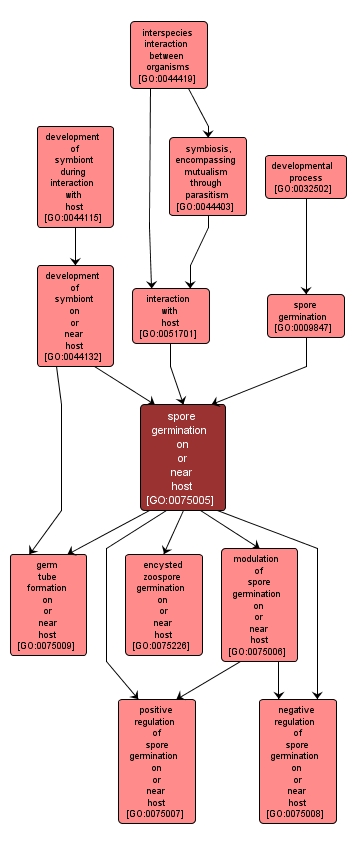| Desc: |
The physiological, developmental and morphological changes that occur in a symbiont spore following release from dormancy up to the earliest signs of growth occurring on or near its host organism. The host is defined as the larger of the organisms involved in a symbiotic interaction. |














